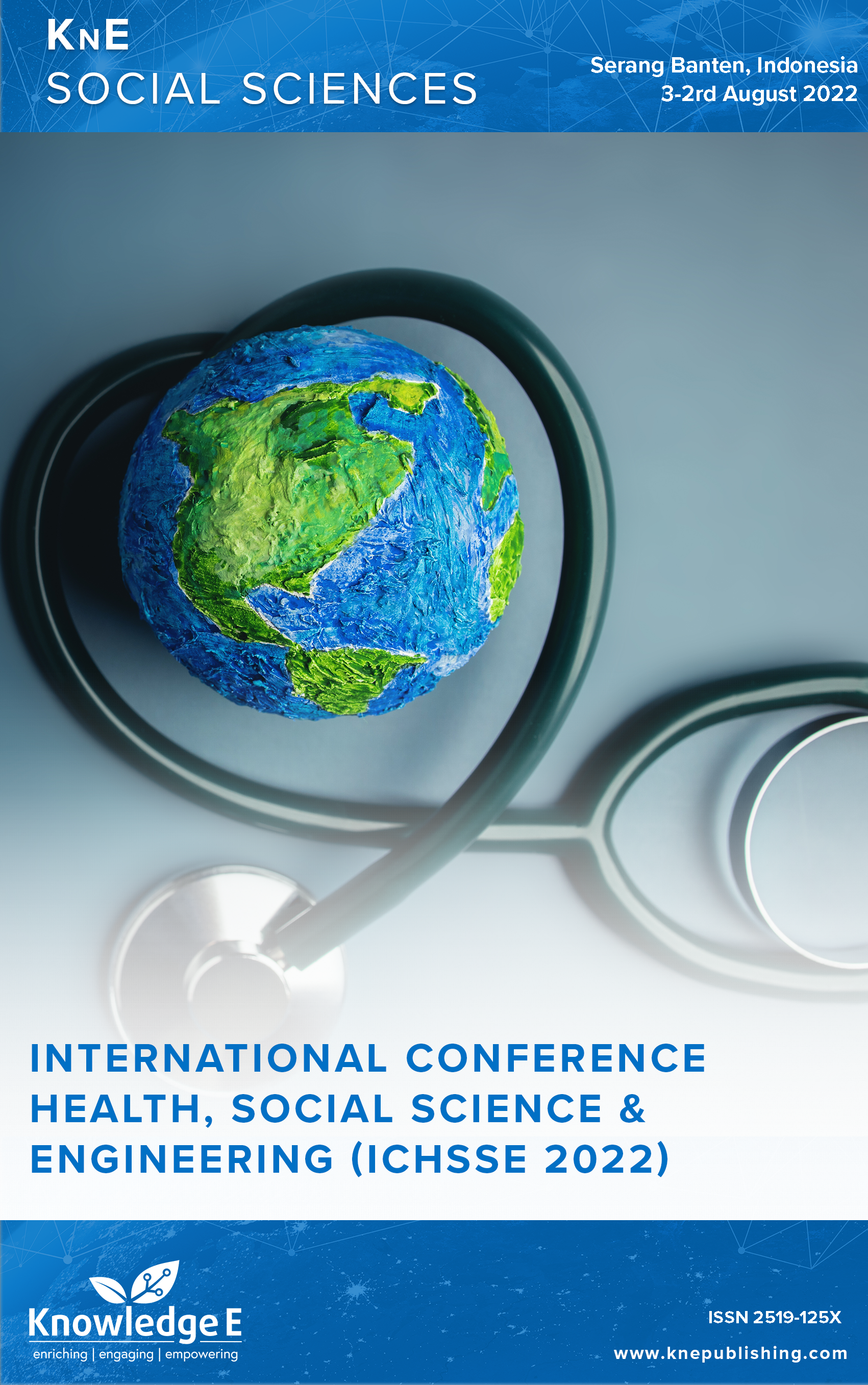Cheese Whey Wastewater: Characterization and Value
DOI:
https://doi.org/10.18502/kss.v8i14.13858Abstract
Cheese whey is the liquid that results from the coagulation of milk during cheese manufacture. To produce 1 kg of cheese, 10 L of milk is needed, originally 9 L of cheese whey and in case disposed of without treatment. It creates a significant problem for the environment. The research aims to find out the environmental impact and the potential of whey from Yogyakarta as a useful product. The materials used in the study used cheese whey from Cangkringan Yogjakarta. The parameters of the cheese wastewater were pH, BOD5, COD, TSS, TDS, NH3-H, and the physicochemical analyses targeted the protein, lactose, and fat, based on regulatory quality standards by the Ministry of Environment of the Republic of Indonesia No. 5 of 2014, concerning wastewater quality standards. The results show that TSS of 45,500 mg/L, pH of 5.9, BOD5 of 19,900 mg/L, COD of 90,000 mg/L, TDS 3440 mg/L, NH3-H 42,19 mg/L, protein 2.75%, lipid 0.054%, lactose, 4.1%. We can conclude that the value of BOD and COD, NH3-H in cheese wastewater does not contain good quality water, but on the other hand, whey had good potential for functional food ingredients indicated by protein, lipid, and lactose value. Due to its proven protein, lipid, and lactose value obtained in the study can be used as a functional food ingredient.
Keywords: pollution, cheese whey, wastewater
References
[2] APires, RF, Marnotes NG, Rubio OD, Garcia AC, Pereira CD. ‘Second cheese whey’. Foods. 2021;10(1067):1–24.
[3] Amaral DA, da Silva JA. ‘Whey in the industry: Environmental and valorization impacts’, Rev. Científica Multidiscip. Núcleo do Conhecimento. 2021;0:41–57.
[4] Rocha-Mendoza D, Kosmerl E, Krentz A, Zhang L, Badiger S, Miyagusuku-Cruzado G, et al. Invited review: Acid whey trends and health benefits. J Dairy Sci. 2021 Feb;104(2):1262–1275.
[5] Dinkci N. Whey, waste or value? World J. Agric. Soil Sci. 2021;6(5):1–5.
[6] Blazic M, Pavic K, Zavadlav S, Marcac N. The impact of traditional cheeses and whey on health. Croat J Food Sci Technol. 2017;9(2):198–203.
[7] Zandona E, Blažić M, Režek Jambrak A. Whey utilisation: sustainable uses and environmental approach. Food Technol Biotechnol. 2021 Jun;59(2):147–161.
[8] MP Fox PF. Guinee TP, Cogan TM. ‘Whey and whey products’, in whey and whey products., M. Fundamentals of cheese science. Boston, Ed. Springer New York; 2017. p. 755–769.
[9] Ryan MP, Walsh G. The biotechnological potential of whey. Rev Environ Sci Biotechnol. 2016;15(3):479–498.
[10] Kareb O, Aïder M. Whey and its derivatives for probiotics, prebiotics, synbiotics, and functional foods: A critical review. Probiotics Antimicrob Proteins. 2019 Jun;11(2):348– 369.
[11] Papademas P, Kotsaki P. Technological utilization of whey towards sustainable exploitation. Adv. Dairy Reseach. 2019;7(231):231.
[12] Rajeshwari KV, Balakrishnan M, Kansal A, Lata K, Kishore VV. State-of-the-art of anaerobic digestion technology for industrial wastewater treatment. Renew Sustain Energy Rev. 2000;4(2):135–156.
[13] 13. Chandra R, Castillo-Zacarias C, Delgado P, Parra-Saldívar R. A biorefinery approach for dairy wastewater treatment and product recovery towards establishing a biorefinery complexity index. J Clean Prod. 2018;183:1184–1196.
[14] Ebrahimi A, Najafpour G, Mohammadi M. Biological treatment of whey in an UASFF bioreactor followed a three-stage biological treatment of whey in an Uasff bioreactor following a three-stage Rbc. Chem Ind Chem Eng Q. 2010;16(2):175–182.
[15] Al-tameemi HJ, Jabbar M. ‘BOD : COD ratio as indicator for wastewater and industrial water pollution BOD : COD ratio as indicator for wastewater and industrial water pollution.’ no. July, 2022.
[16] Lingkungan M, Republik H. ‘peraturan menteri lingkungan hidup republik indonesia’, menteri lingkung. Hidup republik indones. Hidup republik Indones. 2014;1–83.
[17] Widyastuti D, Suprayitno D. Effectiveness of Kangkungan (Ipomea Crassicaulis) to reduce BOD levels of Tofu waste using the phytoremediator method. Int J Sci Res Publ. 2020;10(10):60–64.
[18] Abdullahi AB, Siregar AR, Pakiding W, Mahyuddin. ‘The analysis of BOD (biological oxygen demand) and COD (chemical oxygen demand) contents in the water of around laying chicken farm.’ IOP Conf Ser Earth Environ Sci. 2021;788(1):0–6. https://doi.org/10.1088/1755-1315/788/1/012155
[19] Khan AM, Shahid HA. ‘Correlation of COD and BOD of domestic wastewater with the power output of bioreactor correlation of COD and BOD of domestic wastewater with the power output of bioreactor.’ no. April, 2011.
[20] Koda E, Miszkowska A, Sieczka A. ‘Applied sciences levels of organic pollution indicators in groundwater at the old landfill and waste management site’. 2017. https://doi.org/10.3390/app7060638
[21] Noerfitriyani IGE*, Hartono DM, Moersidik SS. ‘Leachate characterization and performance evaluation of leachate treatment plant in Cipayung landfill, Indonesia Leachate characterization and performance evaluation of leachate treatment plant in Cipayung landfill, Indonesia., IOP Conf Ser Earth Environ Sci. 2018;1–7. https://doi.org/10.1088/1755-1315/106/1/012086
[22] Ryan MP, Walsh G. The biotechnological potential of whey. Rev Environ Sci Biotechnol. 2016;15(3):479–498.
[23] Argenta AB, Scheer AD, Argenta AB. Membrane separation processes applied to whey : A review membrane separation processes applied to whey : A review. Food Rev Int. 2019;0(0):1–30.
[24] Narayanan CM, Das S, Pandey A. Food waste utilization: Green technologies for manufacture of valuable products from food wastes and agricultural wastes. Volume 2. Elsevier Inc.; 2017.
[25] Kezia K, Lee J, Weeks M, Kentish S. Direct contact membrane distillation for the concentration of saline dairy effluent. Water Res. 2015 Sep;81:167–177.
[26] Lech M, Niesobska A, Trusek-holownia A, Lech M, Niesobska A, Trusek-holownia A. Dairy wastewater utilization : Separation of whey proteins in membrane and chromatographic processes chromatographic processes. Desalination Water Treat. 2016;3994(February):23326–23334.
[27] Khan S, Amin N, Ansari Z, Majumder DR. Whey: Waste to health and wealth. Int J Curr Microbiol Appl Sci. 2015;2(2):245–253.

